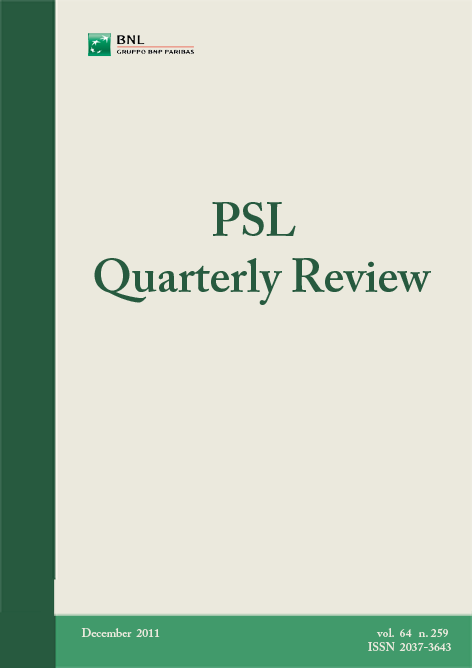The Balance of Payments Constraint as an Explanation of International Growth Rate Differences
DOI:
https://doi.org/10.13133/2037-3643/9407Keywords:
balance of payments, growth, dynamic Harrod trade multiplierAbstract
The paper shows that if long-run balance of payments equilibrium on current account is a requirement then a country's long run growth rate can be approximated by the ratio of the growth of exports to the income elasticity of demand for imports. The model fits well the experience of eighteen OECD countries. It is output, not relative prices, that adjusts the balance of payments, contrary to the neoclassical orthodoxy. Growth can be demand constained by the balance of payments. Paper originally published in vol. 32 n. 128 (1979), pp. 45-53, of BNL Quarterly Review.
JEL Codes: F32, F43
References
BALL R.J., BURNS T. and LAURY J.S.E. (1977), “The role of exchange rate changes in balance of payments adjustment: the U.K. case”, The Economic Journal, March.
CORNWALL J. (1977), Modern capitalism: its growth and transformation, Martin Robertson.
DENISON E. (1967), Why growth rates differ: postwar experience in nine western countries, The Brookings Institution.
DENISON E. and CHUNG W. K. (1976), How Japan’s economy grew so fast: the sources of postwar expansion, The Brookings Institution.
HOUTHAKKER H. and MAGEE S. (1969), “Income and price elasticities in world trade”, Review of Economics and Statistics, May.
KERN D. (1978), “An international comparison of major economic trends 1953-76”, National Westminster Bank Quarterly Review, May.
MADDISON A. (1970), Economic progress and policy in developing countries, Allen and Unwin.
MADDISON A. (1972), “Explaining economic growth”, BNL Quarterly Review, September.
WILSON T. (1976), “Effective devaluation and inflation”, Oxford Economic Papers, March.
Downloads
Published
How to Cite
Issue
Section
License



